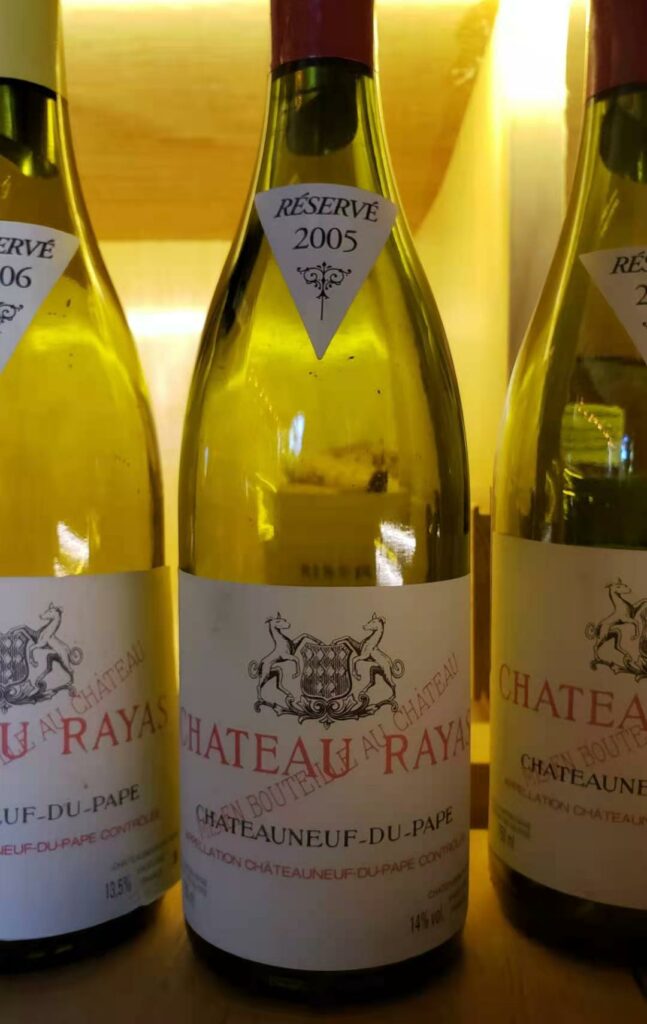A recent posting in the wine press got me to thinking about an issue that vexes so many of us who have been collecting wines for 20+ years: What should we do with wines that have increased in resale value by 15-30 times over original purchase price? Examples abound, from iconic, hard to find (never mind buy) Burgs to Rhones to Bordeaux. Take, for example, the 2005 Château Rayas. Rayas is the most iconic and expensive Châteauneuf-du-Pape. Since the proprietor Jacques Raynaud died in 1997 the wines have gone from expensive, to very expensive. A uniquely elegant wine from a region not known for finesse, Château Rayas is equal in quality to the best Grand Cru Burgundies. However, I must add one caveat: Over many vintages there has been considerable bottle variation in Rayas. Opening a given bottle is done in fear and trembling. Will this be one of those sublime bottles of angelic Grenache or a wine marred by off-aromas? After all, there was no electricity at Rayas until the late 1980s—more than 100 years after the estate was established! No doubt this has contributed to the notoriety and charm of the estate. A bottle of the 2005 Rayas when first available on the market sold in the UK for 80 pounds—a princely sum 13 years ago, but the current re-sale value is 2000 pounds, or 25 times the purchase price. Should we open the bottle with a good friend or sell it and buy many bottles of wines we love?

In my opinion, the correct decision is go ahead and open the bottle and enjoy it with friends and/or loved ones.
I well understand the dilemma: I purchased the 1989 Haut Brion in the mid-1990s for $65. The lowest retail price in America is now $1675. Most stores want well in excess of $2000. Will I drink it or sell it and keep myself happy with a boatload of Grand Cru Alsace wines and top Mosel wines for a few years? Haut Brion is one on my favorite wines. I have drunk many vintages as far back as the unforgettable 1943. It is an old and grand friend. I have no interest in selling it. Haut Brion means too much to me to treat it as a source of revenue. There are several bottles in my cellar which are of much less interest to me and which I could sell without feeling a sense of loss. However, there is another factor involved which is well worth thinking about: call it the moral dimension. Do I want to participate in the commodification of high-end wines? Many who are willing to pay extravagant prices for iconic wines do so with no intention of drinking them. These bottles are owned for their rarity to simply be added to a collection of other rarities. Or perhaps they will be sold at a later time for an even higher price to someone who will never open the bottle. Wine, even rare and iconic wine, is meant to consumed with good friends at table. An unopened wine is akin to a painting which is covered with cloth so that the canvas can be preserved –or placed in a vault under ideal conditions, hidden from prying eyes. Deciding to sell wine to collectors who wouldn’t think of drinking the wine is to ratify this approach, this way of looking at wine. I prefer not to participate in this almost absurd treatment of wine which removes the one genuine reason to own it in the first place: to drink it in the company of like-minded tasters. An un-opened bottle of Haut Brion is a violation of its very essence. Wines should be purchased with the intention to drink them at some point. A wine is actualized when and only when it is consumed. Hoarding rare and expensive wines in effect negates their intrinsic worth. It removes them from the world of experience and pleasure.

 中文
中文



